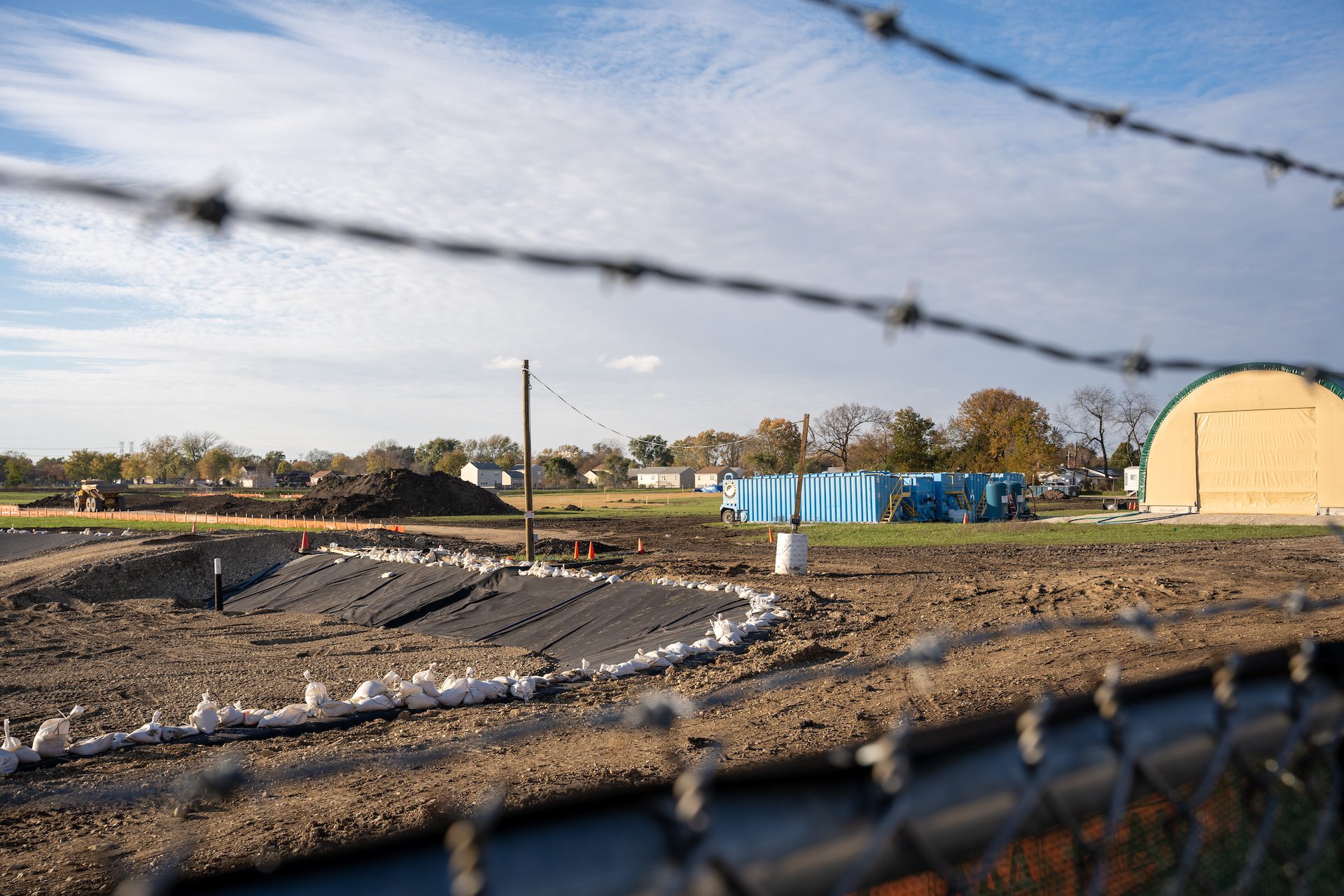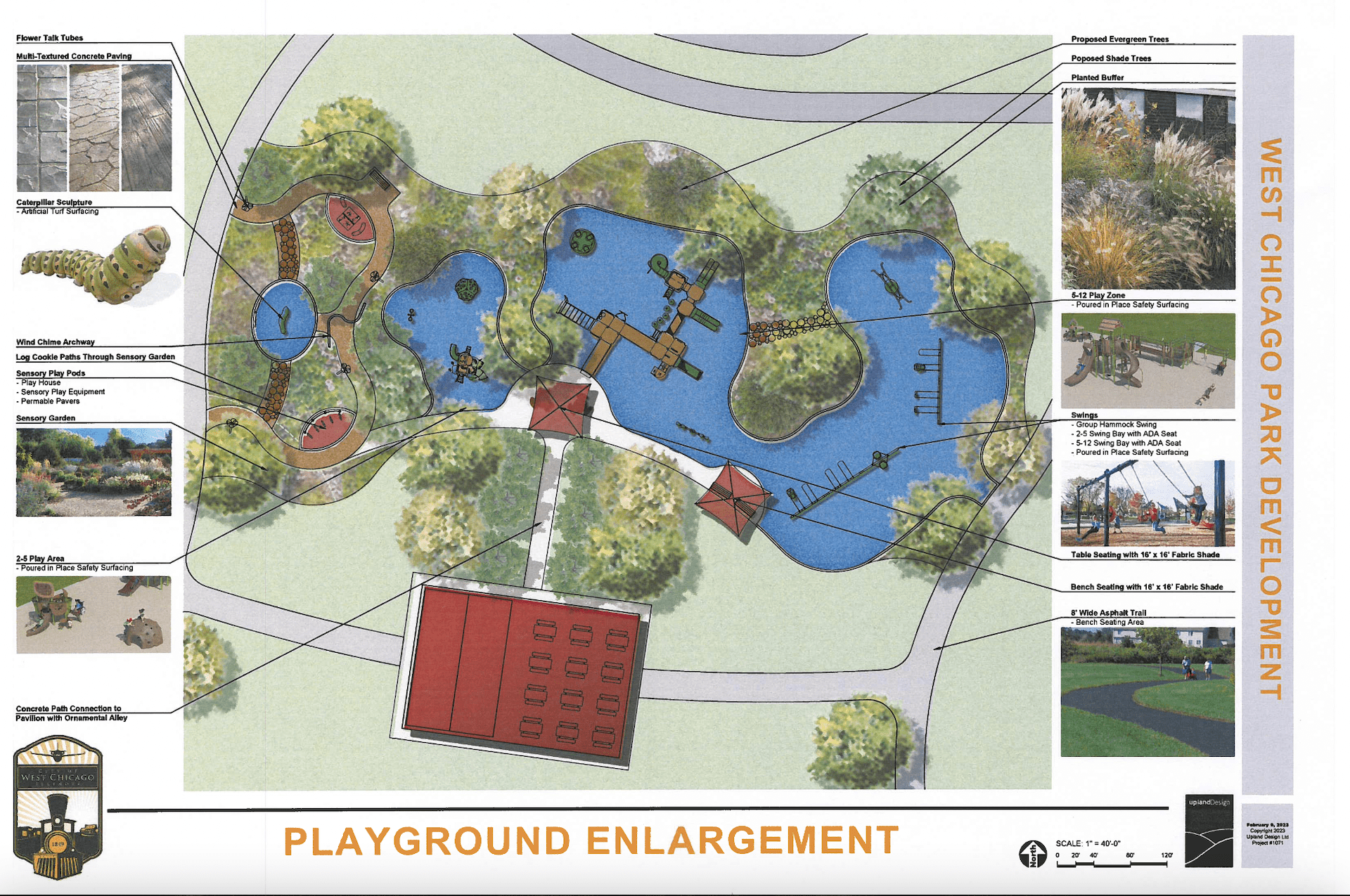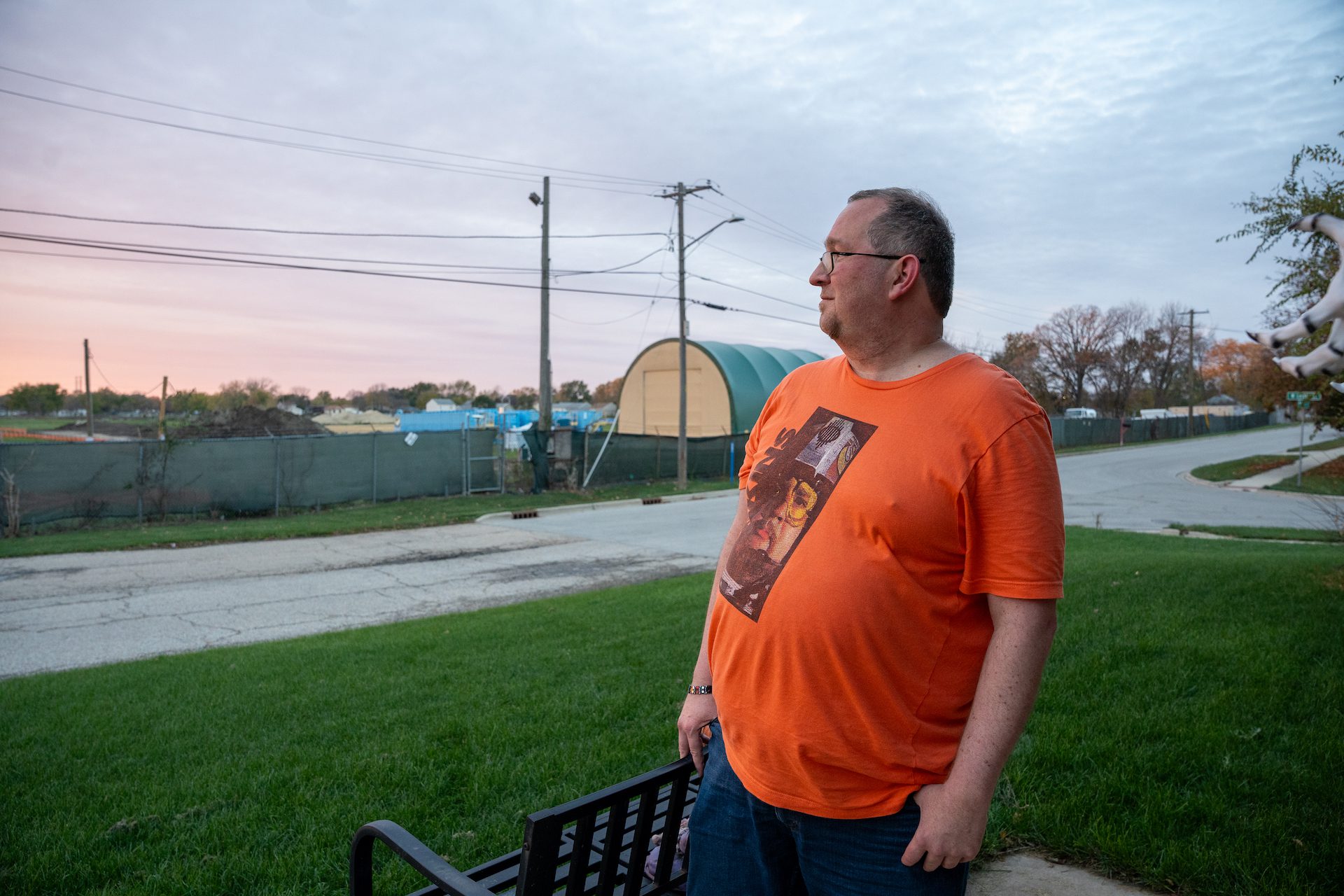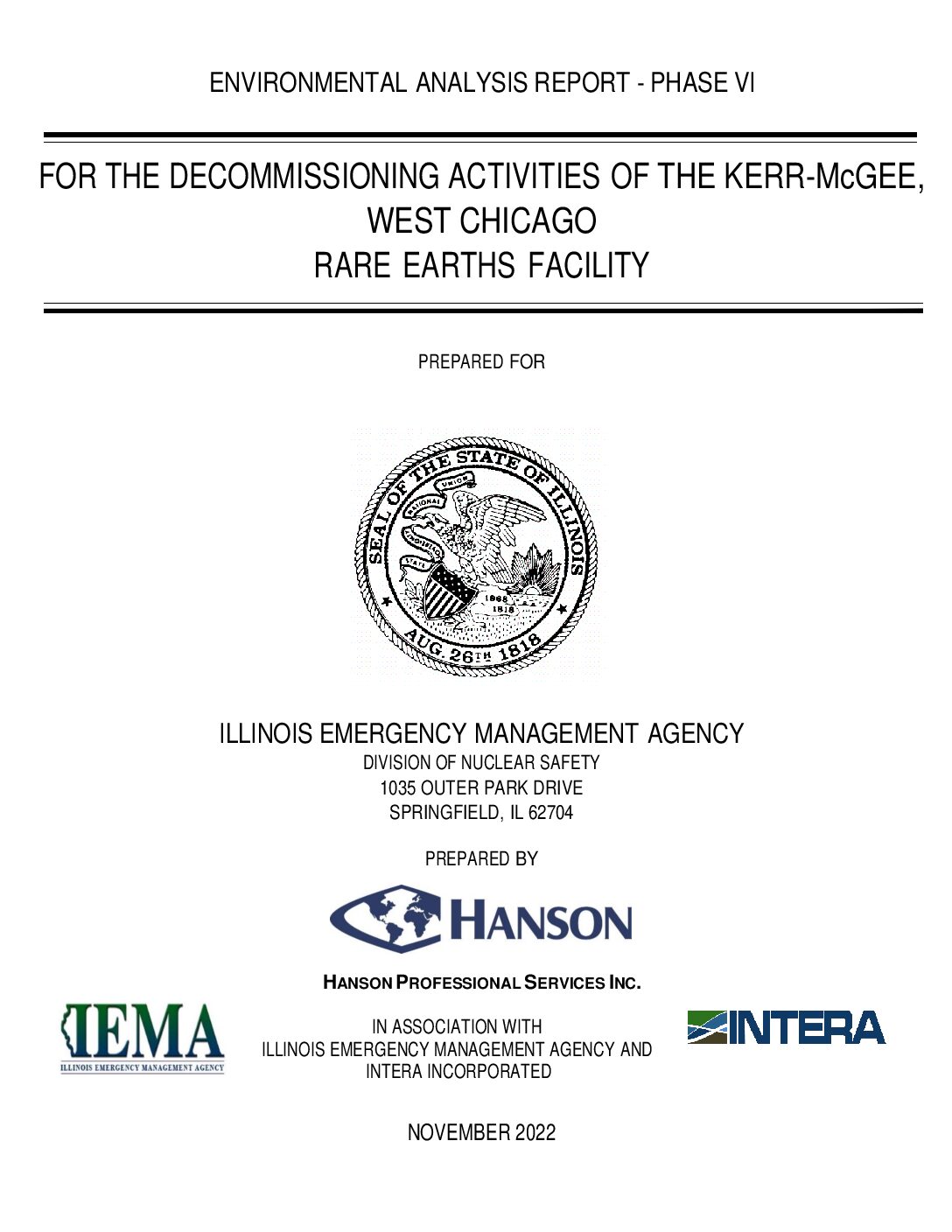 Efrain Soriano for Borderless Magazine
Efrain Soriano for Borderless MagazineWhile newer residents unearth decades of contamination, some neighbors look forward to a planned public park at the former thorium factory.
For years, Ata Rehman has looked out his door and wondered when work would finally be completed on the acres of fenced-in fields near his home in suburban West Chicago.
Since moving across the street in 2016, Rehman has watched spurts of activity — crews coming and going with heavy machinery, followed by long stretches when the vast land was left alone.
“The work is really slow,” said Rehman, who immigrated from Pakistan in 2010.
Want to receive stories like this in your inbox every week?
Sign up for our free newsletter.

Despite the stop-and-start work, he knows very little about what has been happening roughly 50 feet from his porch. Before a Borderless reporter and photographer knocked on his door in early November, Rehman was unaware the fields once housed the world’s largest radioactive thorium and rare earth extraction facility — or the remaining clean-up plan for the site, located about 30 miles west of Chicago.
After decades-long remediation efforts, the final radiation cleanup of the groundwater at the 43-acre property is underway and is slated to finish in 2026. A public park is planned to replace the former factory site with the goal of putting behind the toxic legacy that has long plagued the majority Latino neighborhood.
Today, dump trucks, excavators, and bulldozers are creating 9,000 cubic yards of embankment, the equivalent of about three Olympic-sized swimming pools, around a planned soil treatment cell. The current work is part of the final phase to clean up radioactive and other contaminants on the site. A city building permit at the property fenceline describes “excavation and sheet pile removal,” but the small sign — easily missed by passersby — does not disclose the site’s history.
Standing outside his home, Rehman wishes he knew what was going on. “They should have a big banner, or put a sign out, that describes the work they are doing — the plan,” Rehman said, pointing toward the gate.

Long-stalled cleanup enters final phase
For decades, West Chicago residents raised health concerns about the factory releasing toxic material, but those were largely dismissed until environmental protections were put in place in the early 1970s. It has taken the former owner and the government over 30 years to clean up radioactive waste, while many residents have felt left in the dark.
The Illinois Emergency Management Agency (IEMA) oversees the final phase of groundwater cleanup. It expects to hand over the entire property to the City of West Chicago as early as fall 2026. In September, West Chicago’s city council approved a final plan to build the West Chicago Community Park on the former factory site.

The Rare Earths Facility, known to locals as the Kerr-McGee factory, operated between 1932 and 1973. The factory first produced incandescent lamps and later supplied materials for the federal government’s atomic bomb development. Its unregulated dumping of radioactive byproducts on-site and in the surrounding neighborhoods has left a legacy of health worries and mistrust.
Four areas in West Chicago, including 676 homes, were placed on the Environmental Protection Agency’s National Priorities List as Superfund sites in the early 1990s. They have since been cleaned up to agency standards and are either delisted or in the process of becoming delisted.

Cleanup of the factory site began in 1994 after a protracted battle between Kerr-McGee Corporation, who owned the factory and planned to store the piles of radioactive waste on site, and city residents, who successfully rallied to have the waste shipped to a disposal facility in Utah.
After Kerr-McGee’s spinoff company, Tronox, went bankrupt in 2009, the remaining cleanup fell to IEMA, using the remaining $36 million of bankruptcy settlement and federal Title 10 monies placed in a trust. Last December, U.S. Rep. Sean Casten secured an additional $2 million in funds for the cleanup as part of a $1.7 trillion federal spending bill.
Sang Thuai moved into the neighborhood in February 2022 with her three young children. She thought all the construction on the site was going toward building another factory. A neighbor told her to stop growing the water spinach, mustard, and chiles that she and her family enjoy as part of their Burmese cooking, but she dismissed the contamination concerns as something that was long past.
“I didn’t know about the park,” Thuai said. “We didn’t know anything when we moved here.”
Soil remediation finished at the site in 2015, bringing in-ground levels of radium and uranium, two radioactive contaminants, to cleanup standards. “From where it was in the 1980s to where it is now, the site is hundreds of miles apart in conditions,” said Kelly Horn, IEMA’s Branch Chief of Radiation Protection Services. “As long as nobody is using the groundwater in areas of concern,” Horn added, “there is no human health risk.”
City and county ordinances prevent local residents from using wells in the areas contaminated by factory activities. Horn added that there is “no connectivity” between the City of West Chicago’s water supply and the contaminated shallow aquifers below the site. Most of the city’s supply comes from deep aquifers, Horn said, and the city’s shallow aquifer supplies are located over a mile away from the site and “in a different groundwater pathway flow.” According to Horn, the farthest that groundwater contamination extends is 700 feet beyond the site perimeter.
Since 2015, IEMA’s environmental engineering consultant, Weston Solutions, has been researching the best ways to reduce groundwater contamination. During its operations, the Kerr-McGee factory dumped liquid waste into unlined ponds around the site. About 20 contaminants, including uranium and fluoride, still exceed groundwater protection standards. Sheet piling added during the soil cleanup to protect workers digging up to 70 feet deep has kept groundwater stagnant, causing contaminants to concentrate as rainwater dissolves residual pollution in the ground.
This final cleanup involves pumping and treating the groundwater, extracting uranium and other contaminants from the soil, and removing sheet piling.
Read More of Our Coverage
About 10% of the groundwater below the site will be pumped, treated and then released through a force main to the DuPage River. Weston finished the first part of the groundwater treatment in October and plans to complete the second part after the soil treatment.
The soil treatment, slated to start in mid-2024, involves moving loads of previously cleaned material, which met cleanup standards and was backfilled into the site, to a doubled-lined pond to undergo further cleaning with a leachate solution. This solution will extract the remaining uranium and pass through a series of thermal evaporators and slurry dryers until solids remain, which will eventually be shipped to a disposal facility in Utah.
Finally, in early 2026, the sheet piling will be removed to allow natural groundwater flow to dilute the remaining contaminants, according to IEMA.
Weston reports that cleanup activities, which include emissions from evaporating the leachate solution, dust from moving truckloads of soil, potential accidents such as fires, and the release of treated water into the DuPage River, should not harm residents or the environment if all safety measures are followed.
IEMA monitors groundwater contaminants semi-annually through a series of wells on and off the property. Six monitoring stations around the factory site also measure air particulates, radon and thoron gas, and direct gamma radiation weekly or quarterly. Measurements at these stations have so far not exceeded public dose limits. The agency is reviewing a minimum five-year groundwater monitoring plan, and the need for further environmental monitoring past the current cleanup’s completion.
According to the Phase VI Environmental Analysis Report released by IEMA last year, these treatments aim to get contaminant levels “as low as reasonably possible” and allow soil to be excavated and moved without harming the public. After the three-step cleanup, the groundwater is predicted to reach protection standards through natural dilution within 375 years.
West Chicago’s public park plan aims to put the site’s toxic history in the rearview
Refugio Arias has been watching the progress at the former factory ever since her family moved into the neighborhood 20 years ago. She knew about the factory contamination and is looking forward to the property finally becoming a park that residents can use. “There hasn’t been much going on,” Arias said, “until now.”
Even as the state continues to clean the site, some neighbors have persistent worries about worker safety and the site’s overall safety once the cleanup is complete.

Ata Rehman wonders if workers are following radiation safety protocols. “I don’t see them wearing masks,” he said. Rehman said he has talked to several workers, who have all told him: “We don’t know what’s going on. We just work here.”
According to IEMA, current work is being done on already-remediated soil with contamination levels at or below regulatory limits. Weston will be required to follow state occupational radiation dose regulations during the soil leachate operations and uranium removal.
Read More of Our Coverage
Local activist Julieta Alcantar-Garcia wants to see a final radiation test before park construction takes place. “It’s so important for our community, especially if we’re thinking of kids playing on top of these grounds, to know that that area is safe to build on,” she said. Alcantar-Garcia would also like to see a memorial to the residents who have suffered health impacts from factory-related radiation, perhaps in the form of planting trees for victims.
At the city’s Community Development department, director Tom Debareiner has been leading the park planning process, including community forums. The approved plan, estimated to cost $15 million, includes native plantings, pickleball, tennis, and basketball courts, soccer fields, a playground, walking paths, a sensory garden, and picnic tables, among other features.
The city hasn’t budgeted for this and hopes to obtain state and other funding to phase in various park elements. Debareiner said natural plantings in the north area of the site will begin in about two years. “It’s definitely on our minds,” Debareiner added, “to provide some kind of acknowledgment of the people who worked so hard earlier cleaning up the site.”
Across the street from the site, Andrew Marsh and his partner stood on their porch looking over the fabric-lined wire fence at beeping machinery moving dirt around the former factory site. He is looking forward to walking his dog at the park. “It looks like they’re doing their work, so I can’t complain,” Marsh said, adding, “I hope they got everything.”


Bring power to immigrant voices!
Our work is made possible thanks to donations from people like you. Support high-quality reporting by making a tax-deductible donation today.

